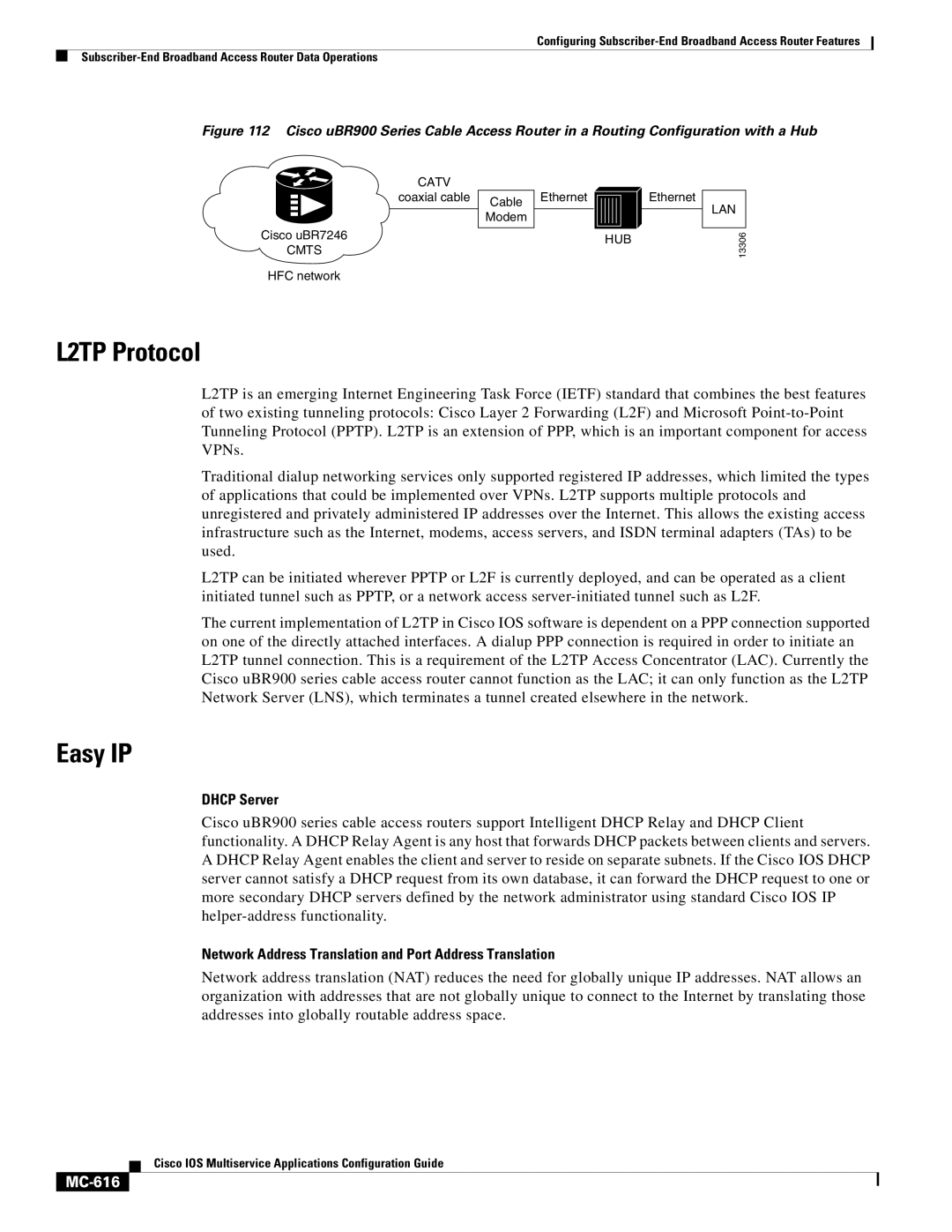
Configuring
Figure 112 Cisco uBR900 Series Cable Access Router in a Routing Configuration with a Hub
CATV
coaxial cable
Cisco uBR7246
CMTS
HFC network
Cable
Modem
Ethernet
HUB
Ethernet
LAN
13306
L2TP Protocol
L2TP is an emerging Internet Engineering Task Force (IETF) standard that combines the best features of two existing tunneling protocols: Cisco Layer 2 Forwarding (L2F) and Microsoft
Traditional dialup networking services only supported registered IP addresses, which limited the types of applications that could be implemented over VPNs. L2TP supports multiple protocols and unregistered and privately administered IP addresses over the Internet. This allows the existing access infrastructure such as the Internet, modems, access servers, and ISDN terminal adapters (TAs) to be used.
L2TP can be initiated wherever PPTP or L2F is currently deployed, and can be operated as a client initiated tunnel such as PPTP, or a network access
The current implementation of L2TP in Cisco IOS software is dependent on a PPP connection supported on one of the directly attached interfaces. A dialup PPP connection is required in order to initiate an L2TP tunnel connection. This is a requirement of the L2TP Access Concentrator (LAC). Currently the Cisco uBR900 series cable access router cannot function as the LAC; it can only function as the L2TP Network Server (LNS), which terminates a tunnel created elsewhere in the network.
Easy IP
DHCP Server
Cisco uBR900 series cable access routers support Intelligent DHCP Relay and DHCP Client functionality. A DHCP Relay Agent is any host that forwards DHCP packets between clients and servers. A DHCP Relay Agent enables the client and server to reside on separate subnets. If the Cisco IOS DHCP server cannot satisfy a DHCP request from its own database, it can forward the DHCP request to one or more secondary DHCP servers defined by the network administrator using standard Cisco IOS IP
Network Address Translation and Port Address Translation
Network address translation (NAT) reduces the need for globally unique IP addresses. NAT allows an organization with addresses that are not globally unique to connect to the Internet by translating those addresses into globally routable address space.
Cisco IOS Multiservice Applications Configuration Guide
